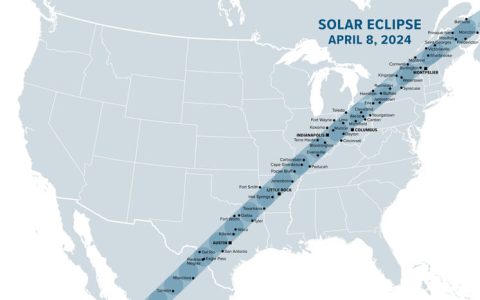Aviation Airspace During a Solar Eclipse
April 8 promises to bring extraordinary yet demanding aviation airspace requirements. Pilots flying during the eclipse will require heightened awareness and adherence to safety protocols as airspace congestion is anticipated to peak. Patience will be key for all involved in ensuring a successful and safe aviation experience during this bustling period.
The aviation community is preparing for this event, with Special Air Traffic Procedures established for the eclipse period. Potential measures include airborne holding, reroutes, and Expect Departure Clearance Times (EDCTs). Traffic Management Initiatives (TMIs) may be implemented to manage the increased air traffic flow effectively.
Pilots are advised to contact their destination airports in advance for parking arrangements, notably at smaller general aviation airports facing limited ramp space. Student pilots seeking flight training may consider alternative plans for that day, and VFR pilots should anticipate significant delays and plan for self-sufficiency before and after the event.
Pilots flying around the eclipse dates are urged to review NOTAMS for their departure and arrival airports, as special procedures, restrictions, and security measures may be in effect and subject to changes. These could include discrete transponder codes, Temporary Flight Restrictions (TFRs), and specific two-way radio communication requirements.
Eclipse Flight Preparation
- Altered Visibility Conditions: During a total solar eclipse, the day momentarily turns into night, significantly altering visibility conditions. Preparing for these conditions involves thorough pre-flight planning, including understanding the exact timing of the eclipse phases and ensuring all cockpit lighting and instrumentations are adjusted for night-time operation.
- Unpredictable Weather Changes: Solar eclipses can influence local weather conditions. The rapid cooling that occurs can lead to the development of unexpected meteorological phenomena. Pilots must be prepared for potential turbulence, changes in wind patterns, or the formation of clouds that could impact flight safety.
- Increased Air Traffic: Total solar eclipses attract significant interest from both professional and amateur aviators seeking to experience the event from the best vantage point. This can lead to increased air traffic in certain areas, raising the risk of mid-air collisions or congestion at airports within or near the eclipse path. Flight planning should include considerations for traffic avoidance strategies, clear communication with air traffic control (ATC), and possibly adjusting flight times to avoid peak traffic periods.
- Visual Protection: Looking directly at the sun, even during an eclipse, can cause permanent eye damage. Pilots and passengers should be equipped with appropriate eclipse glasses or viewers to safely observe the event. Additionally, pilots should be aware that the intense focus on the eclipse could distract from monitoring aircraft instruments and the external environment, emphasizing the need for heightened situational awareness.
- Emergency Preparedness: Despite thorough planning, unexpected situations can arise. Being prepared for emergencies, including carrying extra fuel, having alternate landing sites planned, and ensuring all onboard emergency equipment is in working order, is crucial. Pilots should also brief passengers on safety procedures and the unique aspects of flying during an eclipse.
While April 8 promises to be a remarkable event, it will also bring increased activity and potential challenges. Safety remains paramount in managing airspace capacity, emphasizing adherence to regulations and exercising patience amidst the anticipated congestion.










